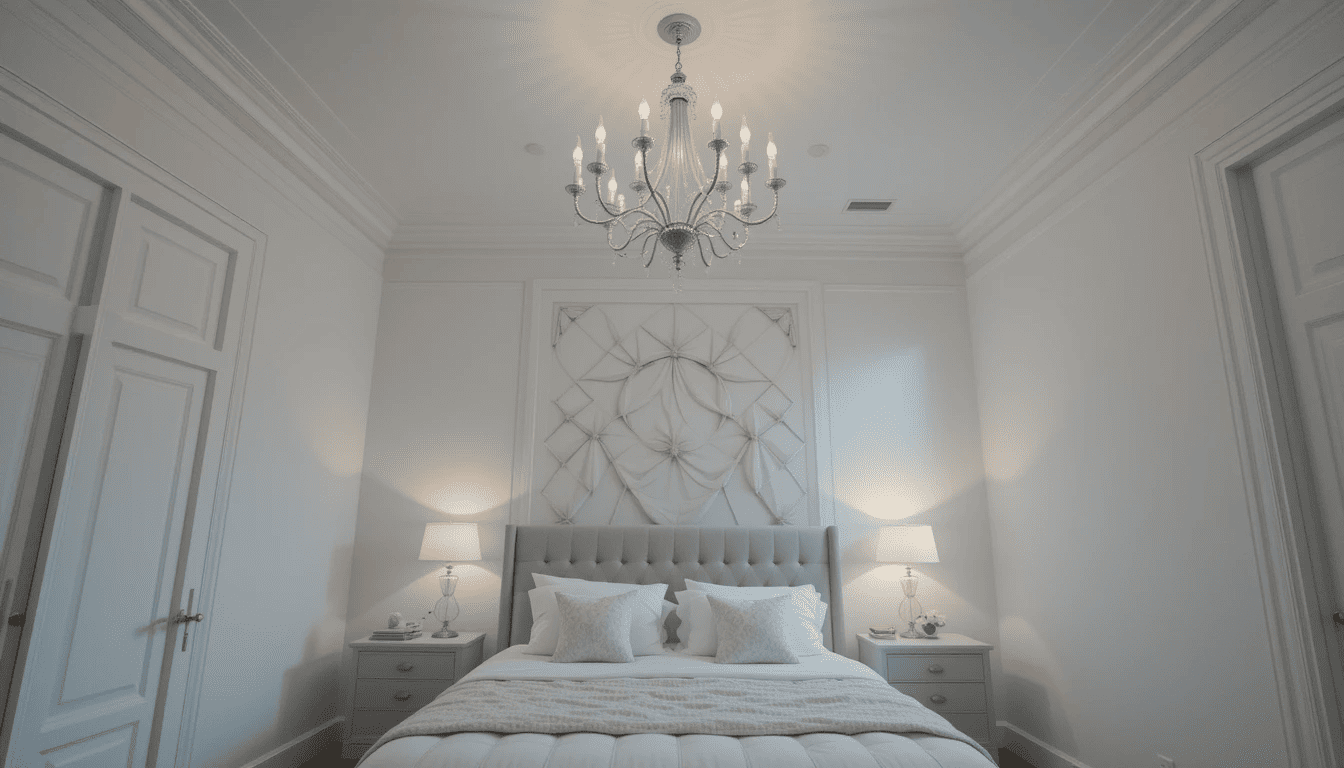Lighting is more than just a functional necessity—it sets the mood, enhances comfort, and affects productivity. If you’re redesigning or upgrading your bedroom, understanding the perfect lumen range for bedroom lighting is crucial to achieving a balance between practicality and coziness. In this article, we’ll explore how lumens work, why they matter, and how to choose the best lumen range for your unique space.

Introduction to Lumens: Understanding the Basics
What Are Lumens?
Simply put, lumens measure the brightness of light. Unlike watts, which describe energy consumption, lumens indicate how much light a bulb emits. The higher the lumens, the brighter the light. For example, a 60-watt incandescent bulb typically produces about 800 lumens, while an energy-efficient LED bulb may achieve the same brightness with only 8–12 watts.
“Understanding lumens allows you to select lighting that balances brightness and energy efficiency.”
Why Are Lumens Important for Bedroom Lighting?
Your bedroom should be a sanctuary, offering the right mix of relaxation, functionality, and style. Choosing the perfect lumen range for bedroom lighting ensures your space is neither too dim nor glaringly bright. This not only enhances comfort but also improves functionality for tasks like reading or getting dressed.
For more guidance on selecting the right lighting, check out How to Choose the Perfect Lighting for Your Bedroom.
The Ideal Lumen Range for Bedroom Lighting
Recommended Lumen Range for General Lighting
General lighting forms the foundation of your bedroom’s brightness. For most spaces, aim for 2,000 to 4,000 lumens, depending on room size and layout.
- Small bedrooms (up to 100 sq. ft.): 1,000–2,000 lumens
- Medium bedrooms (100–200 sq. ft.): 2,000–3,000 lumens
- Large bedrooms (200+ sq. ft.): 3,000–4,000 lumens
Task Lighting: Lumen Suggestions for Reading and Study Areas
Task lighting, such as bedside lamps or desk lights, focuses brightness where you need it most. A range of 400–600 lumens works well for nighttime reading or work, ensuring you can see clearly without straining your eyes.
“Tip: Use dimmable task lights for added versatility.”
Accent Lighting: Creating a Cozy Atmosphere
Accent lighting, such as wall sconces, string lights, or LED strips, typically provides 150–300 lumens. These softer lights add depth and a sense of relaxation to your space, making it feel warm and inviting.
Explore creative ways to use accent lighting in Top 10 Bedroom Lighting Ideas to Create a Cozy Ambiance.
Factors Influencing the Perfect Lumen Range for Bedroom Lighting
Room Size and Ceiling Height
The larger the room, the more lumens you’ll need. High ceilings may also require brighter fixtures to ensure the light reaches all corners.
Wall Colors and Décor Reflectivity
Lighter walls reflect more light, which means you can achieve adequate brightness with fewer lumens. Conversely, darker colors absorb light, necessitating higher lumen output.
“Your walls act like mirrors for light—choose wisely!”
Purpose of the Room
If your bedroom doubles as a workspace or fitness area, you may need layered lighting that combines general, task, and accent options. This ensures you have the right brightness for every activity.
Choosing the Right Type of Bedroom Light
LED vs. Incandescent: Lumen Efficiency Comparison
LEDs offer superior efficiency, producing more lumens per watt compared to incandescent bulbs. This means you can achieve the perfect lumen range for bedroom lighting without excessive energy consumption.
| Type | Lumens Per Watt | Lifespan |
|---|---|---|
| Incandescent | 15–20 | 1,000 hours |
| LED | 60–90 | 25,000+ hours |
For more eco-friendly options, visit Energy-Efficient Lighting Options for Your Home.
Dimmable Lights for Customization
Dimmable lights allow you to adjust brightness levels, making them perfect for bedrooms. They help you transition seamlessly from bright morning routines to relaxed evening vibes.
Common Problems and Solutions in Bedroom Lighting
Overlighting: Avoiding Excessive Brightness
Overlighting can make a bedroom feel harsh and uncomfortable. Stick to the recommended lumen range and consider using frosted bulbs or lampshades to diffuse the light.
Underlighting: Signs You Need More Lumens
If your bedroom feels dim or uninviting, it’s a clear sign you need more lumens. Add supplementary lighting, such as floor lamps or brighter ceiling fixtures.
Mismatched Lighting Styles
Combining mismatched lighting fixtures can disrupt the flow of your space. Layer your lighting thoughtfully to balance the brightness and achieve a harmonious look.
Enhancing Lighting for Different Bedroom Activities
Lighting for Relaxation and Sleep
Soft, dimmable lighting with a warm color temperature (2700K–3000K) is ideal for winding down. Stick to lumens under 2,000 to create a calming atmosphere.
Optimal Lumens for Reading and Productivity
For focused tasks like reading or working, use 400–600 lumens of bright, neutral light. Adjustable lamps can help direct the light where it’s needed most.
Decorative and Aesthetic Lighting Tips
Use accent lighting to highlight architectural details or décor. LED strips, string lights, and sconces (150–300 lumens) add charm without overpowering the room.
Frequently Asked Questions (FAQs)
How Many Lumens Do I Need for a Small Bedroom?
For a small bedroom, 1,000–2,000 lumens are usually sufficient, depending on wall color and ceiling height.
Are Lumens the Same as Watts?
No, lumens measure brightness, while watts measure energy use. Modern LED bulbs focus on lumens for efficiency.
Can Too Many Lumens Disrupt Sleep?
Yes, excessive brightness can interfere with your sleep cycle. Opt for dimmable lights to maintain a soothing ambiance.
How Can I Make My Bedroom Lighting Energy-Efficient?
Switch to LED lights, which provide the perfect lumen range for bedroom lighting with minimal energy usage. For more tips, visit Understanding Lumens: A Guide to Light Output.
Conclusion: Achieving the Perfect Lumen Range for Bedroom Lighting
The perfect lumen range for bedroom lighting strikes a balance between practicality and ambiance. By considering factors like room size, purpose, and décor, you can create a space that feels both functional and inviting. Whether you’re reading, relaxing, or working, the right lighting ensures your bedroom is a haven of comfort.
Ready to transform your space? Dive deeper into the essentials with Understanding Lumens: A Guide to Light Output.